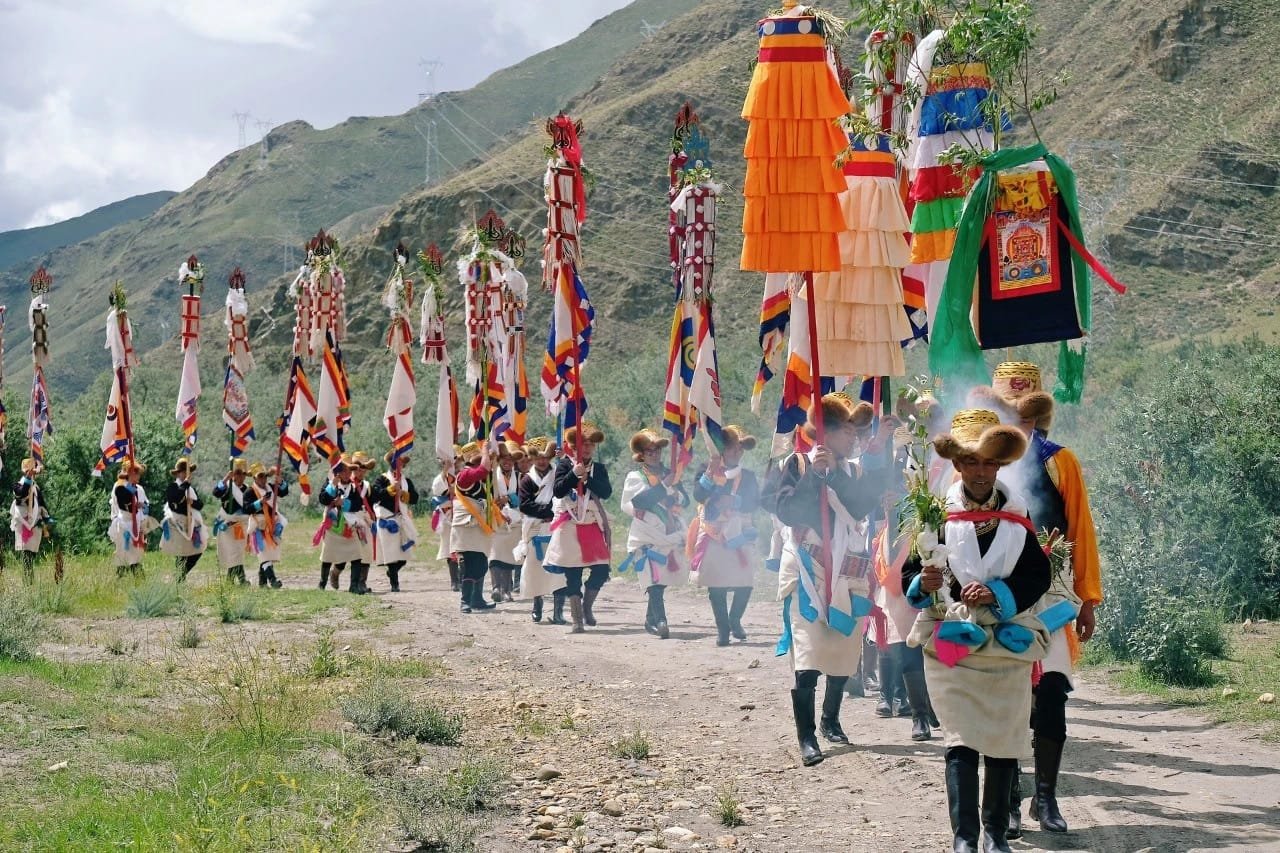Historical Context and Lineage
Mutri Tsépo, the second king of Tibet, occupies a complex position within the historical narrative of early Tibetan history. Emerging from the storied Yarlung Dynasty, just after the reign of his reputed father, Nyatri Tsépo, controversies regarding Mutri’s lineage and the exact timeline of his reign are critical to understanding the political landscape of early Tibet. The Yarlung Dynasty, believed to have established the foundation of the Tibetan state, is a crucial element in Tibetan identity, history, and governance.
The Yarlung Dynasty’s reign coincided with a significant consolidation of power, culture, and spirituality, laying the groundwork for the formation of Tibetan society as it is recognized today. Mutri Tsépo’s reign is often discussed within the context of a transitionary period in which the initial spiritual and secular leadership began to interact more intricately. Despite being surrounded by uncertainty and a dearth of concrete documentation, the influence of the Yarlung rulers during this epoch catalyzed profound agricultural advances, trade routes, and the establishment of cultural societies that would influence future generations.
It’s essential to address the confusion surrounding Mutri Tsépo’s name and lineage. The etymology of his name itself may lead to misinterpretations, potentially conflating his narrative with that of other historical figures. This has compounded difficulties for historians seeking to paint a comprehensive picture of the Tibetan socio-political fabric during his time. His association with the Yarlung Dynasty is critical, as it highlights the formative narratives of Tibetan kingship and the inherent complexities that arise when piecing together historical accounts from various sources, both oral and written.
As scholars continue to navigate the uncertain waters of Tibet’s early history, Mutri Tsépo stands as a pivotal figure who invites ongoing discussion. The implications of his rule resonate through the ages, shaping the understanding of governance, culture, and identity within Tibet.
Cultural Contributions and Achievements
Mutri Tsépo, recognized as the second king of Tibet, is credited with significant cultural contributions and achievements that shaped the religious and spiritual landscape of early Tibet. His reign marked a pivotal period for the Yungdrung Bön tradition, which is one of the oldest spiritual practices in the region. With royal endorsement, Mutri Tsépo fostered the establishment of numerous Yungdrung Bön practice centers, ultimately founding a total of 37 during his rule. This initiative represented not only a commitment to the preservation but also an expansion of Bön teachings and practices.
Under Mutri Tsépo’s patronage, the Yungdrung Bön tradition experienced a renaissance that revitalized its doctrines and rituals. His support allowed for the establishment of monasteries and practice centers that served as vital hubs for spiritual education and practice. These centers became instrumental in disseminating Bön knowledge, attracting practitioners and scholars from various regions. This proliferation of centers not only facilitated the teaching of ancient texts and sacred rituals but also encouraged community engagement in spiritual development.
The king’s efforts significantly impacted Tibetan culture by intertwining the secular and spiritual realms. By aligning the monarchy with the Bön tradition, Mutri Tsépo fostered an environment in which spirituality was embraced as a fundamental aspect of governance. His rule enhanced the perception of Bön as a prestigious spiritual path, thus influencing the cultural identity of early Tibet. The establishment of multiple practice centers contributed to a cohesive community, where shared beliefs and practices could flourish, laying the groundwork for the future development of Tibetan Buddhism and its integration with Bön.
Influence on Yungdrung Bön and Tibetan Religion
Mutri Tsépo, often recognized as the pivotal figure in shaping Tibetan spirituality, significantly impacted the evolution of Yungdrung Bön during his reign. His strategic decision to invite 108 esteemed Zhang Zhung scholars to Tibet marks a transformative moment in the preservation and development of the Bön traditions. This initiative enriched the knowledge surrounding Bön rituals, philosophies, and practices, facilitating a deeper engagement with the ancient spiritual heritage of Tibet. The arrival of these scholars fostered an environment of intellectual exchange, cultivating a more nuanced understanding of the complexities inherent within Bön cosmology and its relationship with Buddhism.
Furthermore, Mutri Tsépo’s reign saw the establishment of additional practice centers dedicated to Yungdrung Bön. These centers served as crucial hubs for the training of practitioners and the dissemination of Bön teachings. As a result, they contributed to a richer religious landscape wherein indigenous practices coexisted and evolved alongside emerging Buddhist doctrines. This support from the royalty was instrumental, as it legitimized the traditional Bön practices at a time when there was a growing influx of Buddhist teachings from surrounding regions. The endorsement of Yungdrung Bön by the monarchy not only highlighted its importance in Tibetan culture but also reinforced the legitimacy of its practices in the eyes of the populace.
Under the royal patronage of Mutri Tsépo, Yungdrung Bön experienced a renaissance, allowing it to flourish concurrently with Buddhism. This period of growth not only safeguarded the indigenous spiritual practices of Tibet but also ensured that they were dynamically integrated into the broader narrative of Tibetan religion. Thus, Mutri Tsépo’s influence was pivotal in shaping the course of Yungdrung Bön, ensuring its survival and relevance in the rich tapestry of Tibetan beliefs.
Confusion with Historical Figures and Legacy
The historical narrative surrounding Mutri Tsépo, the second king of Tibet, is often intertwined with the complexities of early Tibetan history, leading to notable confusion with figures such as Mutik Tsépo. This conflation is primarily due to the limited number of surviving historical records, which complicates efforts to distill accurate accounts of their reigns and contributions. Historians often grapple with the scarcity of concrete events or achievements explicitly tied to Mutri Tsépo, which in turn affects the broader understanding of his legacy within the context of the Yarlung Dynasty.
Both Mutri Tsépo and Mutik Tsépo are subjects of historical discourse, frequently emerging in discussions related to the formation and evolution of early Tibetan statehood. However, the overlap in their names and the lack of distinct records prompt a reevaluation of their individual contributions. As a result, it becomes a challenge to ascertain the precise role Mutri Tsépo may have played in shaping the political and cultural landscape of Tibet during his reign. The ambiguity surrounding specific incidents or policies linked to him adds layers of complexity to our comprehension of early Tibetan governance.
This uncertainty can be seen as detrimental to our understanding of Mutri Tsépo’s significance in Tibetan history. Nevertheless, this conundrum opens avenues for further research into the broader implications of dynastic rule in early Tibet. By examining the fragmentary records and evaluating mutual influences between various figures, researchers may establish potential connections and reframe the narrative surrounding the Yarlung Dynasty. Ultimately, unraveling the complexities of Mutri Tsépo’s legacy not only illuminates his potential contributions but also enriches our understanding of the foundational periods of Tibetan history.




